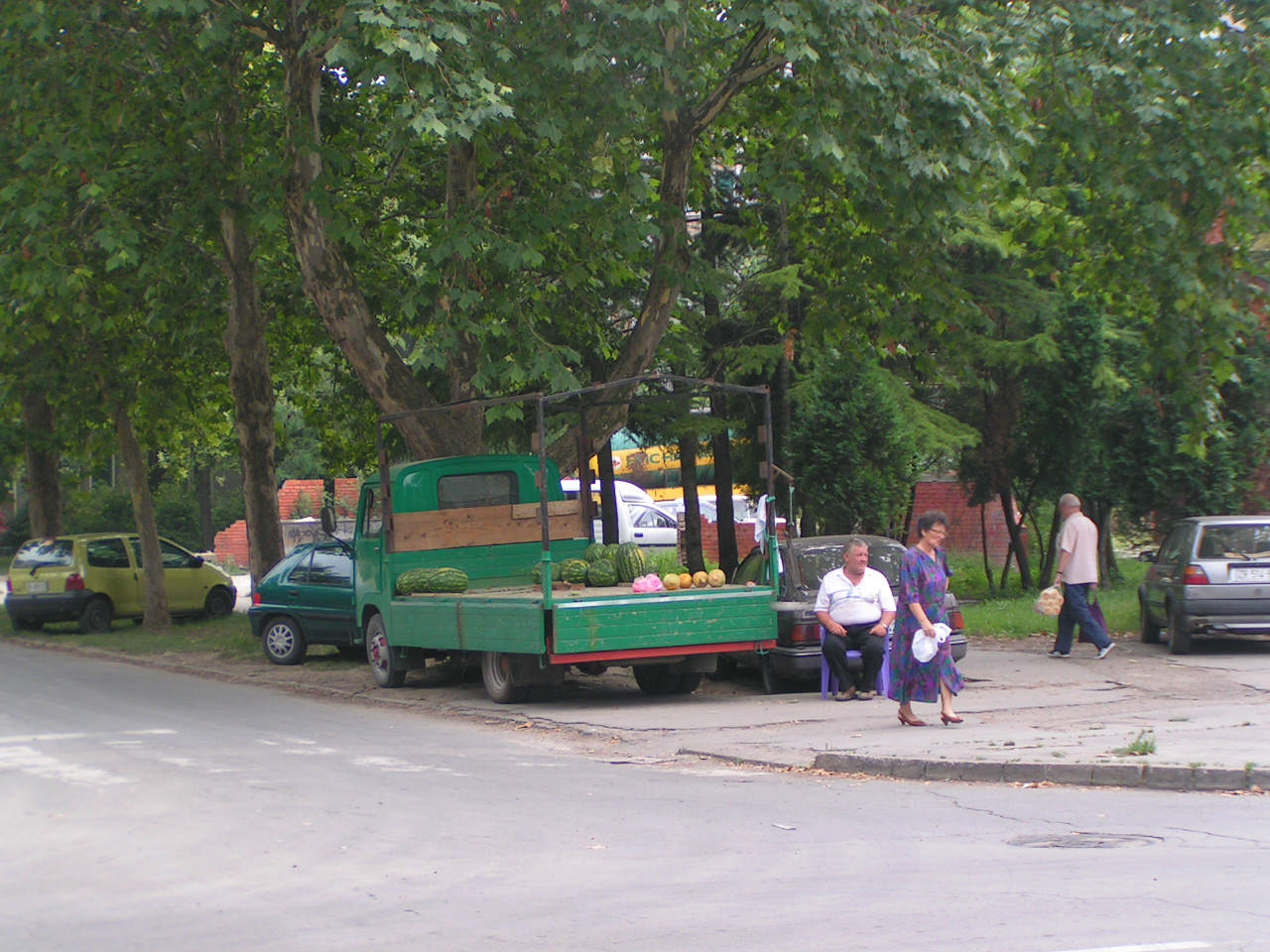bostan
(Translation, Yugoslavia)

In 2005, some switched to pickups, but the small tractors still worked.
Aggregate name for watermellons and canteloupes, and maybe there was, once, a third one that I can't remember. There's a whole culture around them, as they were traditionally the sweets that one eats cold, on hot summer afternoons. They would ripen at beginning of august, but in XXI century they started growing cultivars which come a couple of week earlier, and then they also started importing from Turkey and Greece.
They were sold on markets, but also on streets - first by peasants with horsecarts, then with smaller tractors (see the picture at Lesnina). They'd leave a full trailer parked somewhere, with someone equipped with a scale, and take the tractor to work, come back in the evening to hitch the trailer.
There are several preferences. Most people like the mellon to have as few seeds as possible. Some eat anything thats more red than green, some stop as soon as it gets close enough to the rind. Everyone loves the heart of it; the pulp between the seeds is considered second class, it being softer and more spongy. The seedless types appeared in some seasons but never became mainstay. The mellon has to be cold, nobody loves it tepid or warm. The techniques of cooling usually involve cold water - lowering it into a well, or a river, is the ancient technique. Leaving it under a tap with just a hairline jet of water will cover it whole with a very thin layer of water (something to do with adhesion and surface tension of the rind and water). The ubiquity of refrigerators doesn't help much, a proper mellon is 20kg, so often there is no room in the fridge.
My preference is to avoid canteloupes(... 4 words...).
Mentions: august 1960., 14-I-1961., 08-VIII-2005., Lesnina, in serbian